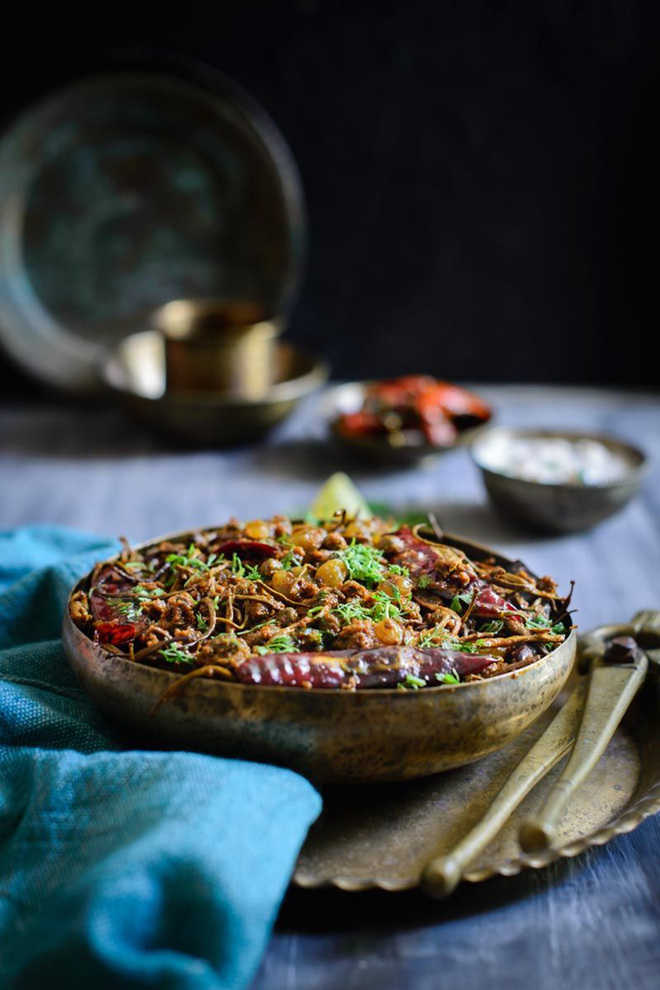Rashmi Gopal Rao
The cuisine map of India is indeed a crowded one with each region boasting of its unique specialities and ‘must try’ dishes. Backed by a rich history spanning centuries, the cuisine of each region is influenced by native cultures, traditions and, to a large extent, by the agricultural produce that is in turn dictated by climatic and soil conditions. Here’s a look at some unique regional produces and their delectable preparations.
Ker Sangri
This is a Rajasthani speciality prepared from dried ker berries and sangri beans. Ker berries have a distinctive bitter sour taste; sangri is the bean of a flowering tree called khejari. Abundant in winters, both are combined to form ker sangri. A signature dish that is a regular feature in Marwari weddings, it is prepared by first soaking the berries in salty buttermilk and is allowed to ferment for a couple of days. It is then strained and dried for a couple of days after which it is cooked in spices and beans.
Kaanji
A fermented drink made from black carrots that are a rich source of antioxidants as well as vitamins C and E, kaanji is a speciality of Punjab. Black carrots are difficult to preserve. Therefore, they are often processed into different products such as juice, concentrate and kaanji, which is a traditional fermented beverage. Apart from carrots, kaanji includes crushed mustard seeds, lemon, black salt and water. The drink is stored in a ceramic pot and kept in the sun to ferment for three to four days.
Pathrode
A delicacy that is popular in the coastal districts of Uttara Kannada, Dakshina Kannada and Udupi of Karnataka as well as parts of Maharashtra and Goa, pathrode are essentially steamed pinwheels prepared from colocasia leaves. Making pathrode involves cleaning the leaves and smearing them with a batter of rice, coconut, tamarind and spices. The leaves are then rolled and steamed, after which they are sliced and either deep fried or shallow fried. In the North, these are known as patode; the batter includes besan and, sometimes, onion paste.
Gulla sambar
Gulla is an indigenous variety of green brinjal cultivated in and around the village of Matti (also called Mattu) in Udupi, Karnataka. The first produce of these eggplants is offered to Lord Krishna at Krishna Matha, Udupi, even today. Grown in September-October, these have a unique flavour owing to their low moisture content. The gulla sambar is a delicacy of the region and is prepared by adding a ground mixture of coconut and red chillies to the brinjals, which are boiled in tamarind juice, jaggery and green chillies.
Mulayaripayasam
A truly unique dessert, mulayaripayasam is made from bamboo rice harvested by tribals from the Wayanad region in Kerala. An extremely rare variety grown out of a dying bamboo shoot, bamboo rice is a natural short grain that is rich in carbohydrate, fibre and protein. Depending on the species, these bamboos grow in the forest and flower once in 40-60 years, releasing a rare variety of rice seeds. The payasam is a lip-smacking sweet preparation that is made after boiling the rice and cooking it with jaggery, coconut milk and dry fruits with a tinge of cardamom.
Unlock Exclusive Insights with The Tribune Premium
Take your experience further with Premium access.
Thought-provoking Opinions, Expert Analysis, In-depth Insights and other Member Only Benefits
Already a Member? Sign In Now











